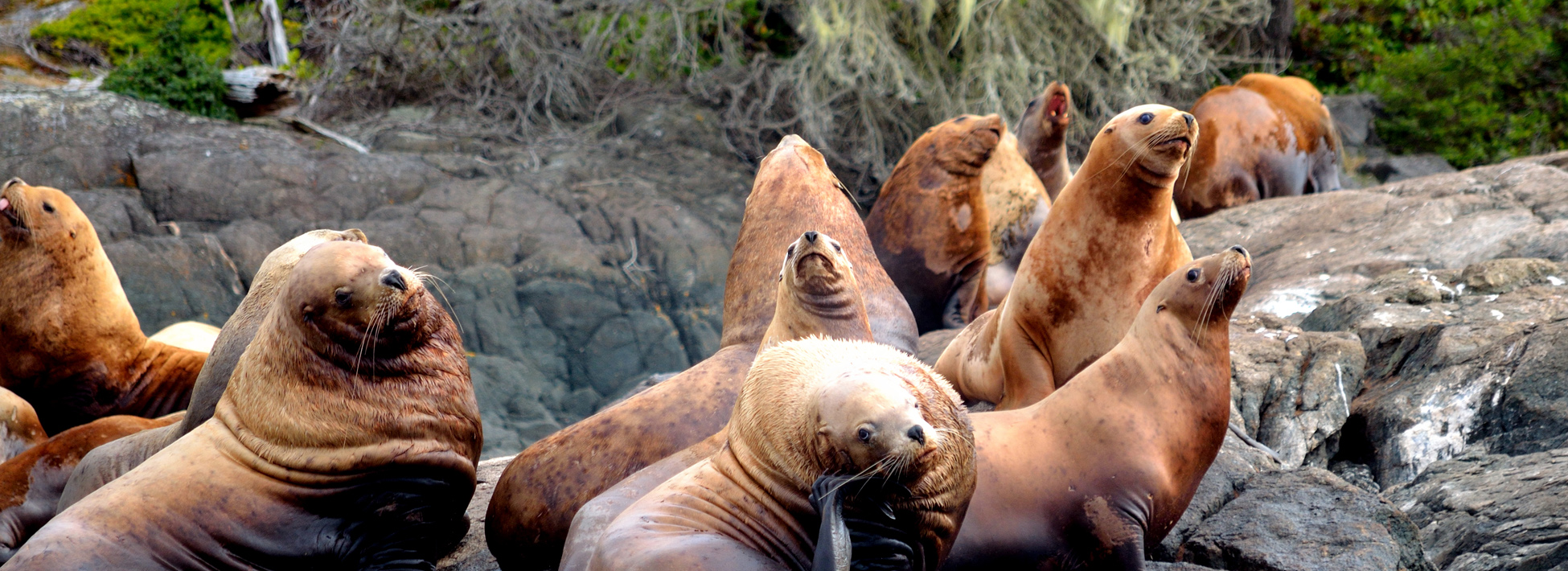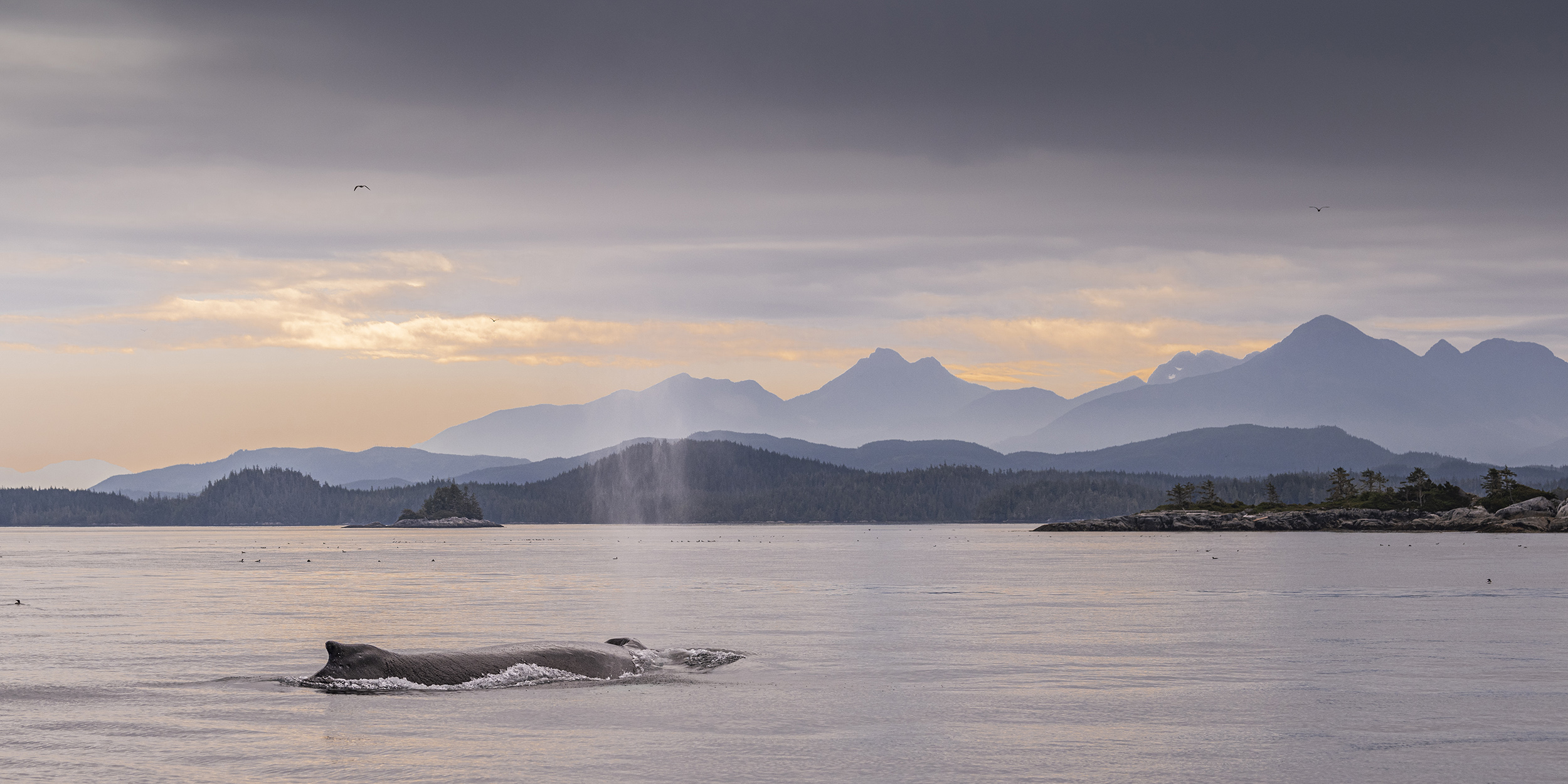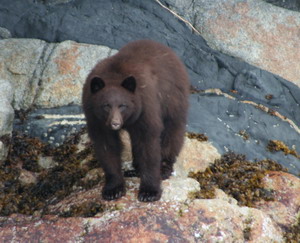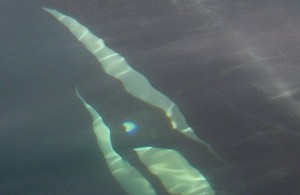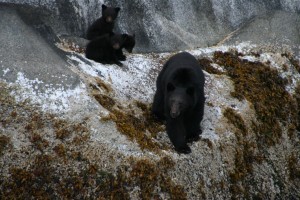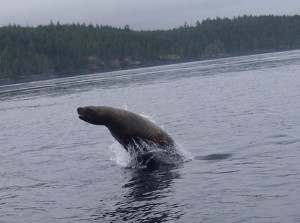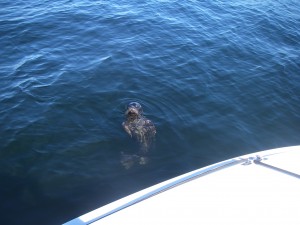
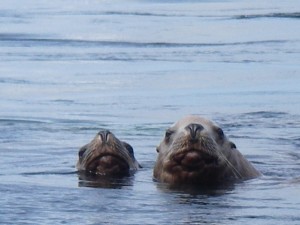
The whale watching day from the lodge requires a fifty-minute boat ride to the area around Johnstone Strait, which is part of the Inside Passage to Alaska. On this day we have a picnic lunch that is normally eaten in the boat as we drift with the whales or other marine life. I am always amazed at the curiosity of these mammals. With the motor turned off and sitting quietly we frequently have visitors. Harbour seals because of their size are a little more timid and less frequent. Steller sealions will approach the boat swimming around and beneath when we have lunch near their “haul out island”.
